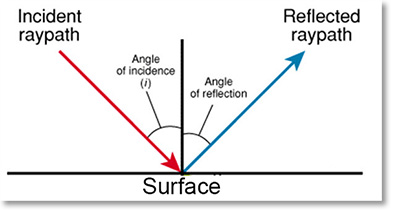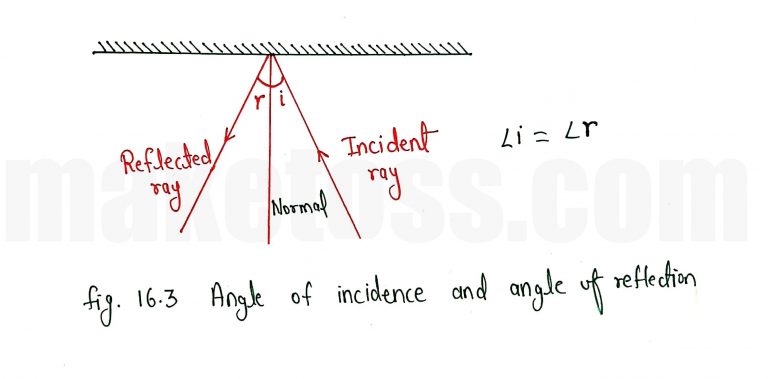
We'll need a few other explanations, like the one we'll cover next. Unfortunately, a ray theory can't explain all of the behaviors exhibited by light. We take advantage of this effect to correct a person's vision or enhance it by making distant objects appear closer or small objects appear bigger. The net effect of the refraction at these two boundaries is that the light ray has changed directions. As the same ray exits, it's refracted again. The reflection of sound follows the law 'angle of incidence equals angle of reflection', sometimes called the law of reflection.The same behavior is observed with light and other waves, and by the bounce of a billiard ball off the bank of a table.

As a ray of light enters the transparent material, it is refracted. The angle of incidence of ray is measured from the normal to the plane it intersects and congruent angles have congruent angles have congruent complements, so it follows that the angles of incidence are congruent. Lenses serve to refract light at each boundary. Angle AMO and NMB are vertical angles and vertical angles are congruent. Whenever a light wave is incident on a metal or an insulator like water or glass, each point on the surface radiates a wave that is either 180 degrees out of phase (for a metal or from a low refractive to a high refractive index) or in phase (from a high refractive index to a low index, like from inside glass to air).

A lens is a piece of glass or other transparent substance with curved sides for concentrating or dispersing light rays. Lenses, like those in a telescope or in a pair of glasses, take advantage of refraction. Diamonds have a higher index of refraction than water, which is to say that those sparkly, costly light traps slow down light to a greater degree. In the law of reflection, students do not often question why the angle of incidence is equal to the angle of reflection and why a light ray should follow this specific. The initial topics that are introduced through their lessons are laws of reflection and refraction of light. Diamonds wouldn't be so glittery if they didn't slow down incoming light much more than, say, water does. Students are often introduced to optics in their middle school years. The amount of bending, or angle of refraction, of the light wave depends on how much the material slows down the light. Simply why angle of incidence is equal to angle of reflection In the simplest form it states that the light ray travels along a path between two points which needs the shortest time.

When this happens, light changes speed and the light ray bends, either toward or away from what we call the normal line, an imaginary straight line that runs perpendicular to the surface of the object. Angle between incident ray and reflecting surface normal is equal to angle between reflected ray and reflecting surface normal. Refraction occurs when a ray of light passes from one transparent medium (air, let's say) to a second transparent medium (water).


 0 kommentar(er)
0 kommentar(er)
